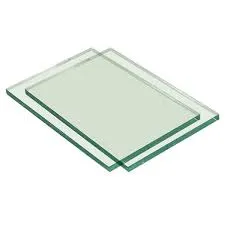Exploring the Art and Technique of Mirror Design Etching
In the realm of decorative arts, mirror design etching stands out as a captivating technique that combines functionality with artistic expression. This age-old craft reimagines the traditional use of mirrors, transforming reflective surfaces into intricate works of art. As we delve into the intricacies of mirror design etching, we uncover its historical significance, the techniques employed, and its contemporary applications.
Historical Context
The art of etching mirrors dates back centuries, with its origins traced to ancient civilizations. The earliest recorded instances involve artisans from Egypt and China who understood the importance of reflection not just for practical purposes, but also for spiritual and aesthetic reasons. These early mirrors, often made from polished metals, laid the groundwork for the glass mirrors we use today.
As technology evolved during the Renaissance, so too did the techniques for creating reflective surfaces. The invention of glass mirrors revolutionized the art form, allowing for clearer reflections. The introduction of etching techniques further enhanced the visual appeal, as artisans began to experiment with various methods to create designs that delighted the eye. In this context, mirror design etching emerged as both an artistic endeavor and a means of enhancing the beauty of everyday objects.
The Etching Process
At its core, mirror design etching involves the application of designs onto a glass surface, often using acid or abrasive materials to create patterns. The process typically begins with a plain mirror, which is then coated with a protective layer. The artist then uses a technique called masking to delineate the areas that will remain reflective from those that will be etched.
Once the design is established, the chosen etching technique can be applied. Traditional etching involves the use of hydrofluoric acid, which erodes the glass surface to produce a frosted effect. This technique can yield intricate patterns, from floral motifs to geometric designs, giving each piece a unique character. Additionally, modern etching methods, such as sandblasting, afford artists greater flexibility in manipulating the mirror's surface.
mirror design etching
Artistic Inspiration and Design
The beauty of mirror design etching lies not only in the technique but also in the artistic inspiration behind each piece. Artists often draw from a diverse array of sources, including nature, culture, and personal experiences. Organic forms, such as leaves and flowers, frequently feature in etched designs, symbolizing growth and vitality. Geometric shapes and abstract patterns, on the other hand, reflect modern sensibilities and can evoke feelings of balance and harmony.
An important aspect of etching mirrors is the interplay of light and shadow. The carved designs interact with ambient lighting, creating dynamic reflections that shift with the viewer's perspective. This kinetic quality enhances the allure of etched mirrors, making them not just decorative objects, but also narrative pieces that invite contemplation.
Contemporary Applications
In today’s design landscape, mirror design etching continues to thrive, finding its place in both residential and commercial settings. Interior designers often incorporate etched mirrors into their projects to add a touch of elegance and sophistication. Whether used as statement pieces in a foyer or as subtle accents in a bathroom, these mirrors contribute to the overall aesthetic of a space.
Moreover, artists are pushing the boundaries of traditional mirror etching by incorporating mixed media and technology. The fusion of digital design tools with traditional etching techniques allows for unprecedented precision and complexity, giving rise to a new generation of mirror art that resonates with contemporary audiences.
Conclusion
Mirror design etching embodies a rich tapestry of history, art, and technology. It serves as a testament to human creativity and the enduring desire to beautify our surroundings. As we continue to navigate the worlds of art and design, the etching of mirrors remains a fascinating intersection of craftsmanship and innovation. Through the lens of this art form, we not only see our reflections but also the boundless possibilities that creativity can unveil.
 Afrikaans
Afrikaans  Albanian
Albanian  Amharic
Amharic  Arabic
Arabic  Armenian
Armenian  Azerbaijani
Azerbaijani  Basque
Basque  Belarusian
Belarusian  Bengali
Bengali  Bosnian
Bosnian  Bulgarian
Bulgarian  Catalan
Catalan  Cebuano
Cebuano  Corsican
Corsican  Croatian
Croatian  Czech
Czech  Danish
Danish  Dutch
Dutch  English
English  Esperanto
Esperanto  Estonian
Estonian  Finnish
Finnish  French
French  Frisian
Frisian  Galician
Galician  Georgian
Georgian  German
German  Greek
Greek  Gujarati
Gujarati  Haitian Creole
Haitian Creole  hausa
hausa  hawaiian
hawaiian  Hebrew
Hebrew  Hindi
Hindi  Miao
Miao  Hungarian
Hungarian  Icelandic
Icelandic  igbo
igbo  Indonesian
Indonesian  irish
irish  Italian
Italian  Japanese
Japanese  Javanese
Javanese  Kannada
Kannada  kazakh
kazakh  Khmer
Khmer  Rwandese
Rwandese  Korean
Korean  Kurdish
Kurdish  Kyrgyz
Kyrgyz  Lao
Lao  Latin
Latin  Latvian
Latvian  Lithuanian
Lithuanian  Luxembourgish
Luxembourgish  Macedonian
Macedonian  Malgashi
Malgashi  Malay
Malay  Malayalam
Malayalam  Maltese
Maltese  Maori
Maori  Marathi
Marathi  Mongolian
Mongolian  Myanmar
Myanmar  Nepali
Nepali  Norwegian
Norwegian  Norwegian
Norwegian  Occitan
Occitan  Pashto
Pashto  Persian
Persian  Polish
Polish  Portuguese
Portuguese  Punjabi
Punjabi  Romanian
Romanian  Russian
Russian  Samoan
Samoan  Scottish Gaelic
Scottish Gaelic  Serbian
Serbian  Sesotho
Sesotho  Shona
Shona  Sindhi
Sindhi  Sinhala
Sinhala  Slovak
Slovak  Slovenian
Slovenian  Somali
Somali  Spanish
Spanish  Sundanese
Sundanese  Swahili
Swahili  Swedish
Swedish  Tagalog
Tagalog  Tajik
Tajik  Tamil
Tamil  Tatar
Tatar  Telugu
Telugu  Thai
Thai  Turkish
Turkish  Turkmen
Turkmen  Ukrainian
Ukrainian  Urdu
Urdu  Uighur
Uighur  Uzbek
Uzbek  Vietnamese
Vietnamese  Welsh
Welsh  Bantu
Bantu  Yiddish
Yiddish  Yoruba
Yoruba  Zulu
Zulu 

